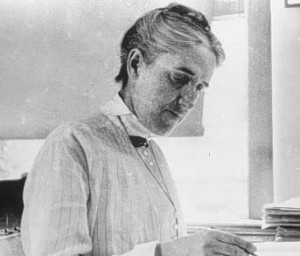This is the first in a short series focusing on super brainy ladies who have been largely forgotten, and aims both to celebrate them and their contribution to various fields. I hope that these short remembrances of fantastic hard-working women may go some small way to establishing the forgotten history of female academia, and remind us of the difficulties that intelligent women have faced and sometimes still face today.
Henrietta Leavitt was an American girl from Massachusetts, who grew up to make some important astronomical discoveries. Despite the fact that Leavitt’s discoveries influenced the famous works of astronomer Edwin Hubble, she has gained little recognition for her work during or after her lifetime. Not only was Leavitt disadvantaged because of the expectations of her gender at the time, but also because of numerous health issues which left her deaf. She died at the age of just 53 having suffered from cancer.
When she first joined the Harvard College Observatory after a wide-reaching education in everything from geometry to fine art, she worked as a ‘computer’. She earned only $10.50 per week (25 cents per hour!) measuring and recording the brightness of stars from photographic plates – women were not allowed to operate telescopes in the early 1900s. Leavitt worked alongside many other highly educated women including Cecilia Payne, another forgotten astronomer.
While working as a ‘computer’ Leavitt noticed a pattern in some variable stars (stars whose luminosity changes over time). In 1912, she found that more luminous stars had longer periods of brightness and that she could consistently relate one to the other. The discovery of this relationship – ‘Period-luminosity relationship’ – made it possible for scientists to calculate how far away from Earth the stars were. These stars are now called ‘Cepheid variables’. This had a huge influence on the work of Hubble who without Leavitt’s work would not have been able to postulate the theory that the universe is expanding. Leavitt’s supervisor Edward Pickering published her work under his own name.
Her work was recognised by Gösta Mittag-Leffler (a Swedish mathematician) who attempted to nominate Leavitt for the Nobel Prize after her death, and Hubble himself who said that she deserved the Nobel prize for her work. She is omitted from most school textbooks today, but lives on through a lunar crater and asteroid (5383 Leavitt) which are both named after this brilliant woman.
If you want to read more about this amazing lady, check out George Johnson’s biography, Miss Leavitt’s Stars, or Laura Gunderson’s play Silent Sky. Please use the comments to bring other forgotten female academics to our attention!
-Emily Lawry
Junior Girl
Girl Museum Inc.

